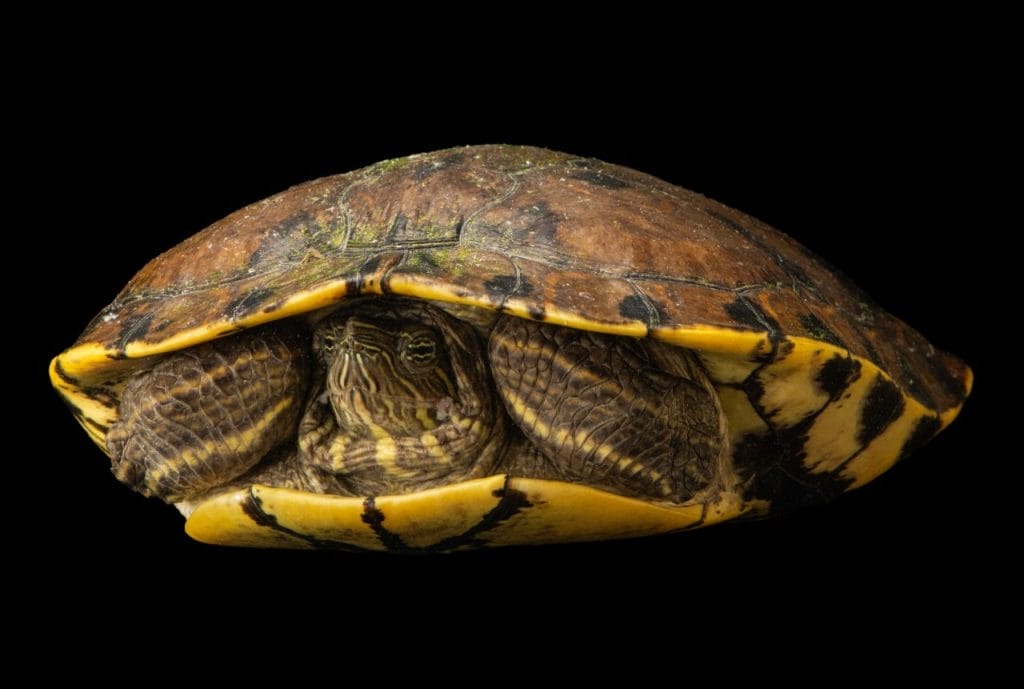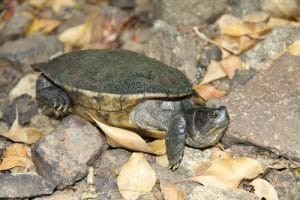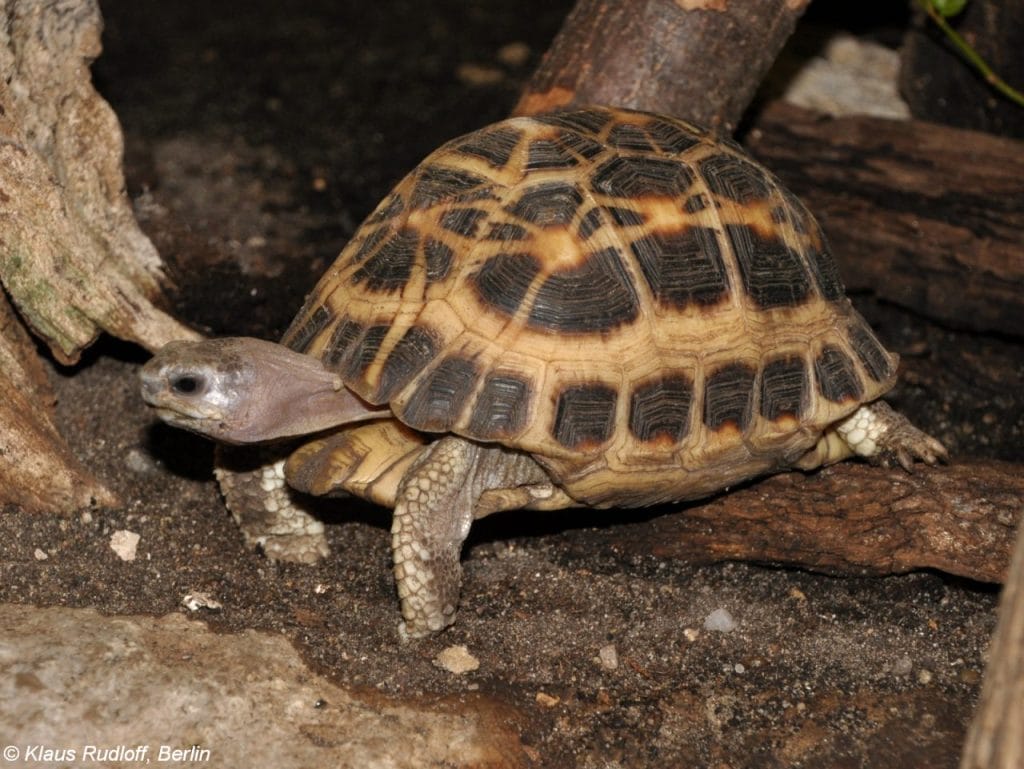Trachemys grayi (Gray’s Slider)
Home > Turtle Database > Trachemys grayi (Gray’s Slider)

Trachemys grayi, also known as Gray’s Slider, is a freshwater turtle found primarily in Central America. It’s closely related to the more well-known Red-Eared Slider and shares many of its behaviors but is geographically more restricted.
Native To These Regions
Alabama (USA), Colombia, Connecticut (USA), Costa Rica, Delaware (USA), El Salvador, Florida (USA), Georgia (USA), Honduras, Louisiana (USA), Maine (USA), Maryland (USA), Massachusetts (USA), Mississippi (USA), New Brunswick (Canada), New Hampshire (USA), New Jersey (USA), New York (USA), Newfoundland and Labrador (Canada), Nicaragua, North Carolina (USA), Nova Scotia (Canada), Ontario (Canada), Panama, Pennsylvania (USA), Peru, Prince Edward Island (Canada), Quebec (Canada), Rhode Island (USA), South Carolina (USA), Texas (USA), Trinidad and Tobago, Venezuela, Vermont (USA), Virginia (USA), Western Ecuador (Ecuador)Native Turtle Species Map – Find Turtles by Region
Scientific Classification
Kingdom: Animalia
Phylum: Chordata
Class: Reptilia
Order: Testudines
Family: Emydidae
Genus: Trachemys
Species: Trachemys grayi
Common Names
Gray’s Slider
Mesoamerican Slider
This Hilarious Turtle Book Might Know Your Pet Better Than You Do
Let’s be real—most turtle care guides feel like reading a textbook written by a sleep-deprived zookeeper.
This one’s not that.
Told from the snarky point of view of a grumpy, judgmental turtle, 21 Turtle Truths You’ll Never Read in a Care Guide is packed with sarcasm, sass, and surprisingly useful insights.
And hey—you don’t have to commit to the whole thing just yet.
Grab 2 free truths from the ebook and get a taste of what your turtle really thinks about your setup, your food choices, and that weird plastic palm tree.
It’s funny, it’s honest, and if you’ve ever owned a turtle who glares at you like you’re the problem—you’ll feel seen.
Identification
Description
Gray’s Slider has a dark green to olive carapace with faint yellow striping and a light yellow plastron marked with dark spots. The head and limbs have thin yellow stripes, and some individuals may show a red or orange tint behind the eyes, though less vivid than the Red-Eared Slider.
Sexual Dimorphism
Males are generally smaller than females but have longer tails and elongated claws on their front feet. Females have shorter claws and broader shells to accommodate egg-laying.
Check more turtles from the Trachemys genus
Native Origin and Distribution
Geographical Range
This species is native to Central America, mainly found in Honduras, Nicaragua, El Salvador, and parts of Guatemala.
Preferred Habitat
Gray’s Slider prefers slow-moving freshwater bodies like rivers, ponds, lakes, and marshes with soft, muddy bottoms and plenty of aquatic vegetation. They are strong baskers and need sunny spots with logs or rocks.
Behavior
Feeding Habits
They are omnivorous. Juveniles eat more animal matter like insects, small fish, and aquatic snails. Adults shift to a more plant-heavy diet, feeding on algae, aquatic plants, and fruits.
Predators
Eggs and hatchlings are often preyed upon by birds, raccoons, and fish. Adults have fewer natural predators but can still fall victim to large mammals and humans.
Reproduction
Breeding Season
Breeding usually occurs during the warmer months, from late spring through summer, depending on local climate.
Reproductive Method
Females lay several clutches of eggs per season in sandy or soft soil near water. Clutch size can vary but usually includes 5–15 eggs. Incubation lasts 60–90 days.
Conservation
Extinction Status
Not Evaluated
Threats
Wetland destruction, pollution, competition with introduced species like Red-Eared Sliders, and illegal collection for the pet market pose risks to local populations.
Conservation Measures
Protection of freshwater habitats, monitoring of wild populations, and restrictions on wild collection help conserve this species.
Economic Importance
Gray’s Sliders are sometimes sold in the pet trade, though less frequently than their close relatives. In rural areas, they may also be used as a food source or for local trade.
Interesting Facts
Gray’s Slider can live over 20 years in the wild.
It basks in groups, often seen piled on logs.
It can recognize its keeper when kept in captivity.
They are very adaptable and can survive in disturbed or semi-urban habitats.

About Author
Muntaseer Rahman started keeping pet turtles back in 2013. He also owns the largest Turtle & Tortoise Facebook community in Bangladesh. These days he is mostly active on Facebook.














